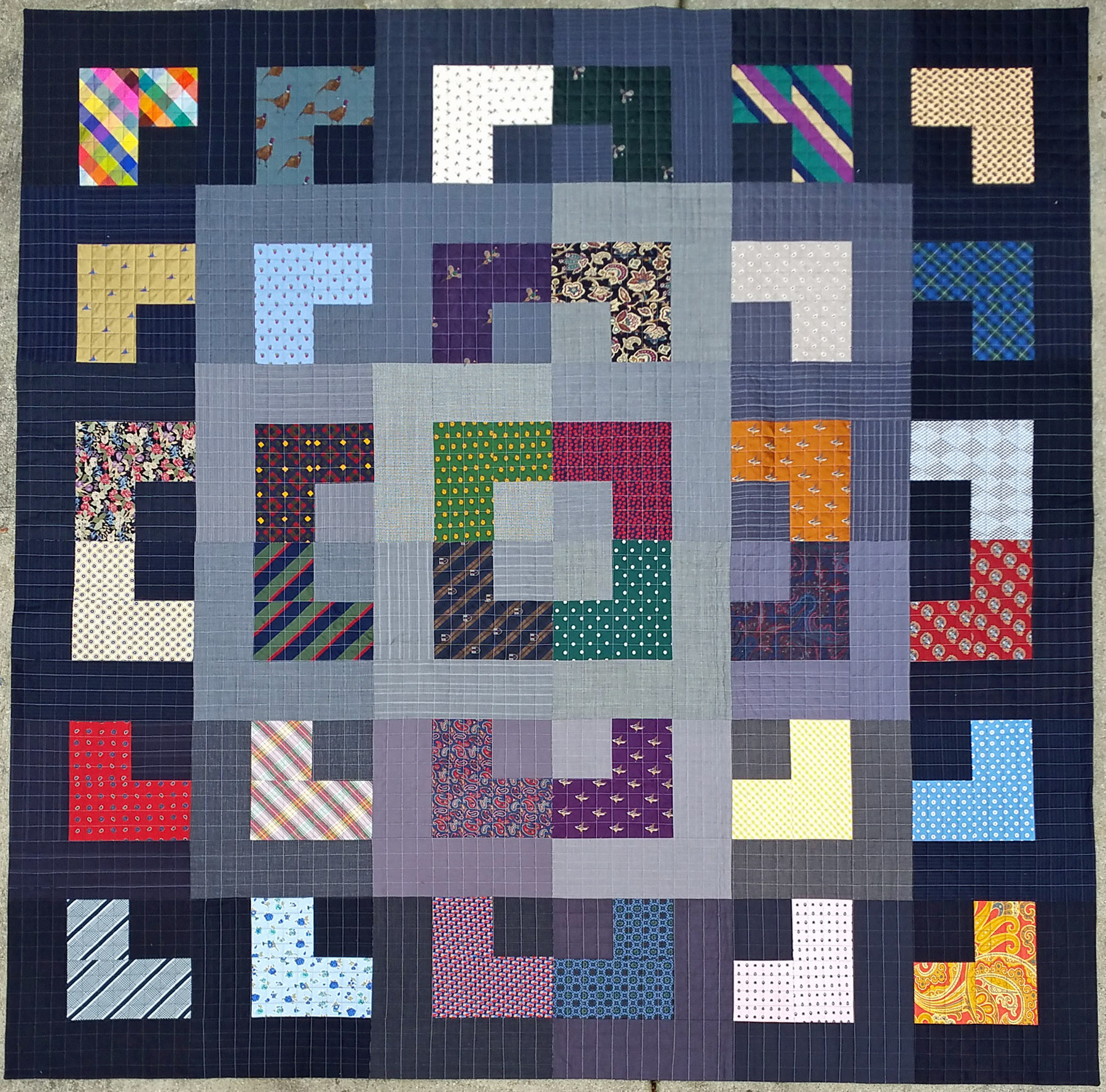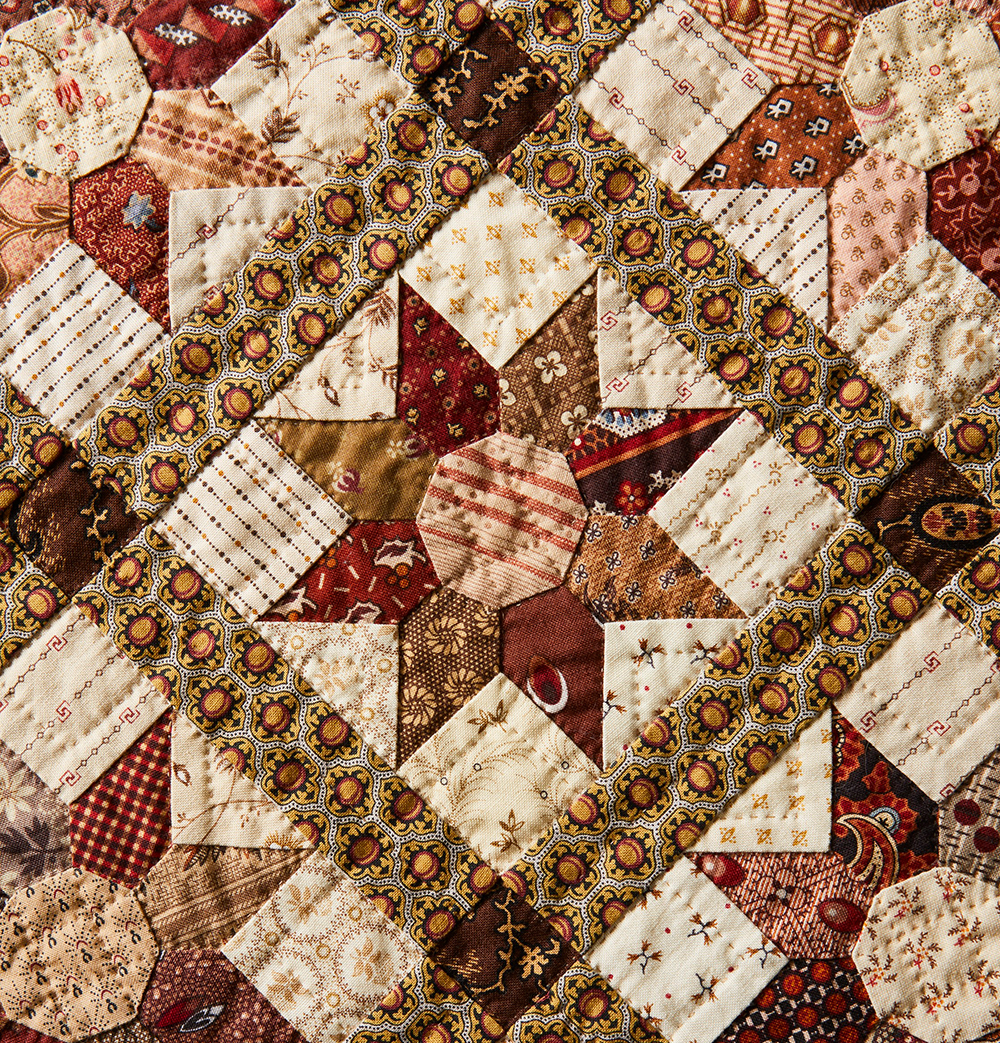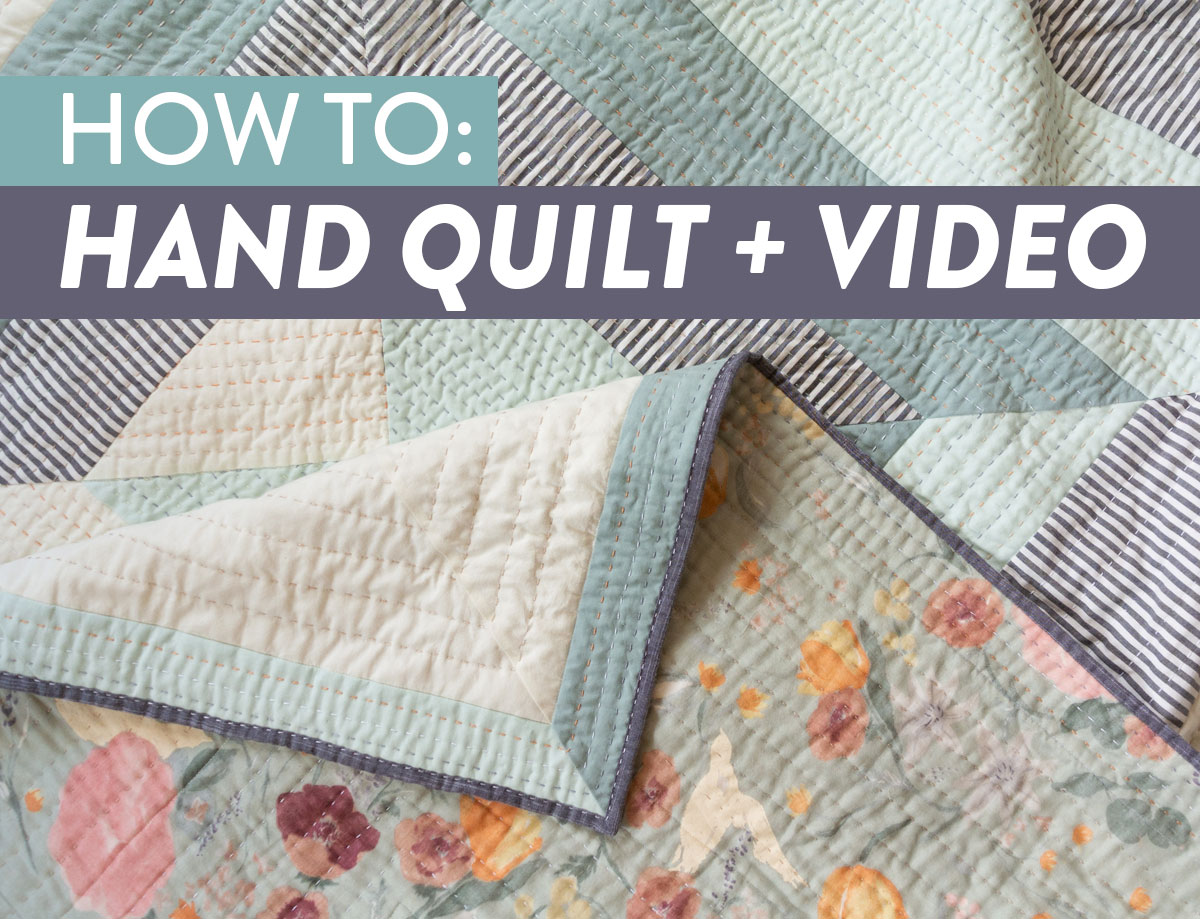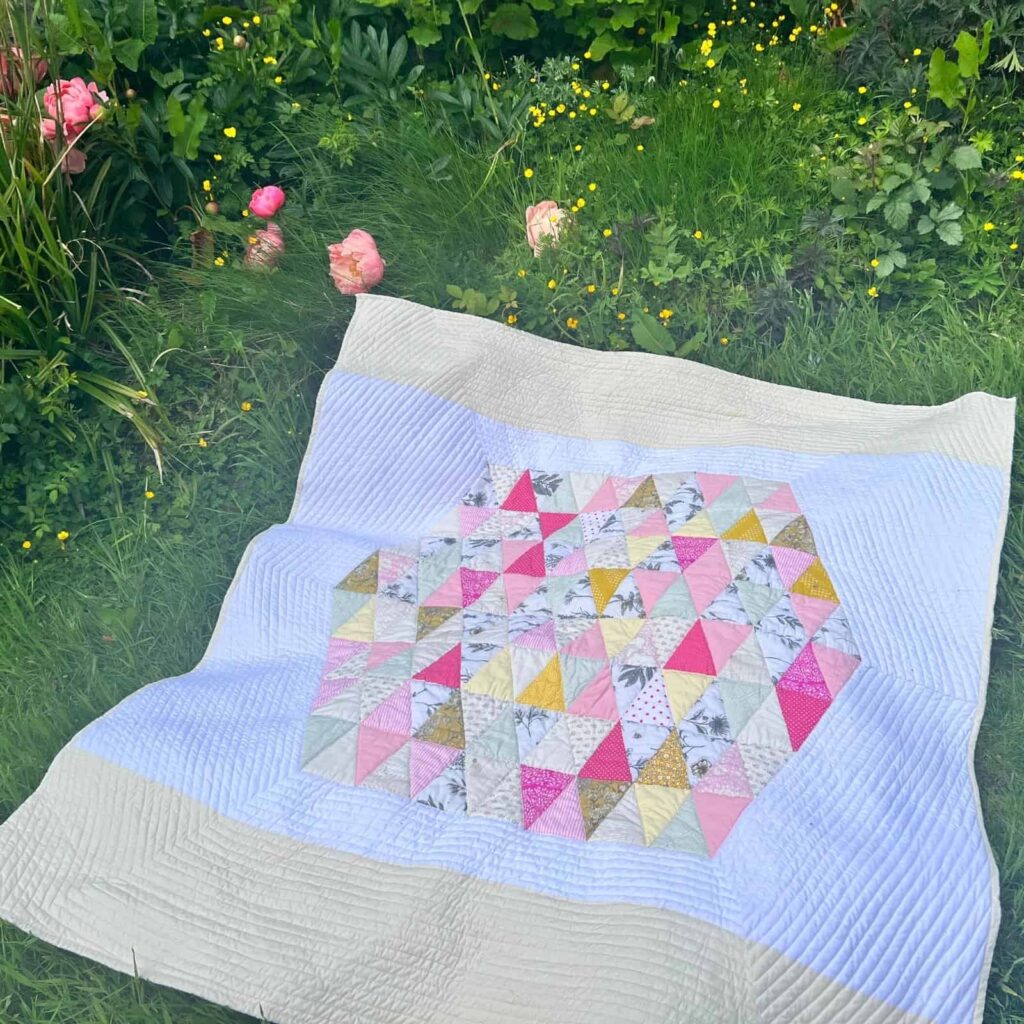Are you looking for a step-by-step guide on how to make a quilt without a sewing machine? Quilting is a craft that has been around for centuries and is a great way to show your creativity. Making a quilt without a sewing machine is a great way to get the same results, without having to buy a machine. In this guide, we will go over the basics of how to make a quilt without a sewing machine, including what material you need, how to cut and assemble the quilt, and how to finish it off. With the right materials and a bit of patience, you can make a beautiful quilt without a sewing machine.
Preparations

Materials
Making a handmade quilt without a sewing machine requires quality fabric, quilt batting, and thread. It is important to select fabrics that are lightweight and don’t fray easily. The batting should also be lightweight and breathable. The thread should be strong and colorfast.
Hand Quilting Supplies
In addition to the materials, you will need a quilting frame, needles, thimble, and scissors. The quilting frame will help keep the quilt from shifting and make it easier to work with. The needles should be between 10 and 12 inches long. The thimble is used to push the needle through the fabric. Lastly, the scissors should be sharp enough to cut through the fabric.
Tip: When selecting materials for your quilt, it is important to choose fabrics and batting that are of good quality. This will ensure your quilt is durable and will last for years.
Hand Piecing the Quilt Top

Planning the Quilt
Before getting started, determine the size, design and colors of your quilt. Make a sketch and measure the finished size of the quilt, then calculate the number of blocks needed. Sketch the design on graph paper and decide how many blocks to make.
Cutting the Fabric
Cutting the fabric accurately is essential for making a successful quilt. Use a rotary cutter, ruler and cutting mat to cut the fabric pieces. Measure twice, then cut the fabric strips, squares and triangles needed for the blocks.
Assembling the Pieces
Arrange the fabric pieces for each block on a flat surface. Use a quilter’s ruler and marking pen to draw a diagonal line on the wrong side of the square. Place the two rectangles right sides together and align the edges. Sew the pieces together using a running stitch, backstitch or over-hand stitch.
Press the seams open or to one side, then join the blocks together to form rows. Sew the rows together, matching the seams and pressing the seams open. When the quilt top is finished, press it with a warm, dry iron.
Hand Quilting the Quilt

Choosing a Design or Pattern
Before you begin quilting, it is important to decide on a design or pattern that you want to use for your quilt. If this is your first time quilting, it is recommended to start with a basic pattern or design to get familiar with the process. Consider the size and shape of the quilt you are making, as well as the colors you are using, when selecting a design.
Quilting the Quilt
Once you have chosen your design, you can start to hand-quilt the quilt. Start by layering the top fabric, batting, and backing of the quilt. Secure the layers together with safety pins, and then begin quilting. Use a quilting hoop to keep the layers of fabric taut while you work. Begin by stitching the design you have chosen, and then move on to quilting the inner sections of the quilt.
Finishing the Edges
Once the quilting is complete, it is time to finish the edges of the quilt. Begin by trimming the excess fabric and batting from the edges of the quilt. Then, use a whip stitch to secure the edges of the quilt together. Finally, add a binding to the edges of the quilt to give it a neat, finished look.
Finishing the Quilt
Backing
For the backing, you will need a large piece of fabric that is slightly larger than the quilt top. The backing is what you will see on the back of the quilt when it is finished. Pin the backing to the quilt top, right sides together. Hand stitch the backing to the quilt top, using a whip stitch or a blanket stitch around the edges.
Binding
To finish the edges of the quilt, you will need to bind it. Cut strips of fabric from the same material as the backing that are 1.5 inches wide. Sew the strips together to create a continuous binding. Pin the binding to the edge of the quilt, right sides together. Hand stitch the binding to the quilt, making sure the stitches are small enough that you can’t see them when the quilt is turned over. Trim off any excess binding.
Frequently Asked Questions
What Kind of Fabric is Best for a Quilt?
Cotton is the most popular choice for quilting as it is soft, breathable, and strong. Other fabrics such as wool, silk and flannel are also suitable for quilting, but be sure to pre-wash the fabric before cutting and sewing to avoid any shrinkage or puckering of the fabric. For a thicker quilt, a flannel fabric is recommended as the extra layer of warmth will help keep the quilt insulated.
What Supplies are Needed to Make a Quilt Without a Sewing Machine?
- Fabric – Choose your desired fabrics and cut into squares, rectangles, or any other desired shape.
- Scissors – Needed to cut the fabric and other materials.
- Pins – Used for pinning the pieces of fabric before stitching them together.
- Needle – Choose a needle with a large eye and sturdy shaft to stitch the quilt together.
- Thread – Choose a strong thread to ensure durability.
- Backing – Choose a strong backing material such as cotton batting, muslin, or flannel.
- Batting – Choose a batting material such as cotton batting, muslin, or flannel.
- Rotary Cutter – Used to cut the fabric into pieces.
- Fabric Marker – Used to mark the pieces of fabric.
How Long Does it Take to Make a Quilt Without a Sewing Machine?
Making a quilt without a sewing machine typically takes significantly longer than with one. This is due to the need to hand-sew each seam. Depending on the size of the quilt and the level of detail, it can take anywhere from several days to several weeks. Preparing fabric and cutting pieces can also add to the total time.
For those new to quilting, a small lap quilt or wall hanging is usually the best place to start. These types of quilts are usually made with smaller pieces, which will require less hand-sewing and thus take less time to complete.
Are there any tips for hand quilting?
Stitch Length: Use small, even stitches when hand quilting. A good rule of thumb is to use 10-12 stitches per inch.
Knots: Tie a knot at the end of your thread before you begin quilting, and again when you finish a quilting line.
Needles: Use a sharp, size 10-12 quilting needle to reduce hand strain and prevent skipped stitches.
Thimbles: Use a thimble to protect your finger from the needle’s sharp point.
Cotton Thread: Choose a high-quality cotton thread in a colour that matches the fabric for the best results.
Batting: Use a low-loft batting for hand quilting, as it is easier to quilt through than a high-loft batting.
Is it Possible to Make a Quilt Without Cutting the Fabric?
Yes, it is possible to make a quilt without cutting the fabric. This can be achieved through a technique known as T-shirt quilting, which uses old T-shirts instead of fabric squares. The T-shirts are arranged in a quilt pattern and then sewn together by hand. This method allows for a unique and personalized quilt that does not require fabric cutting.
Conclusion
Making a quilt without a sewing machine is possible, and with the right tools and techniques you can make a beautiful quilt that is as durable and high-quality as one made with a sewing machine. With patience, a steady hand, and a bit of practice, anyone can make a beautiful quilt without a sewing machine.






